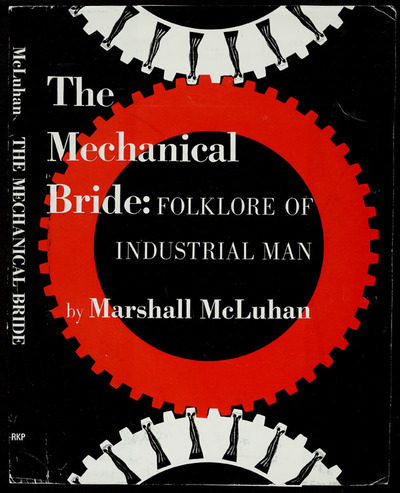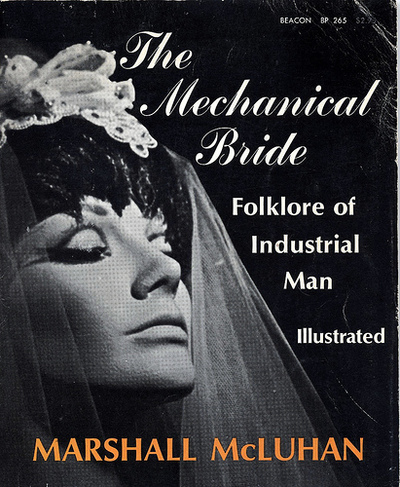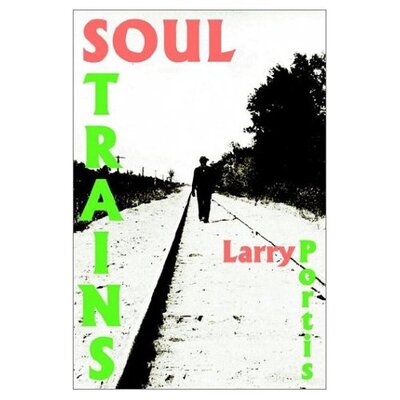The above title is intended to open a discussion about the historical meaning of rock ‘n’ roll, a music representing a transition between the “mechanical” and “electronic” ages, in the terms used by communications theorist Marshall McLuhan.
I contend that rock ‘n’ roll can be understood in terms that go beyond, and more deeply, than the usual approaches to its study allow. This is important to understand, because treating rock ‘n’ roll essentially as a cultural creation of youth, or as a culturally specific example of musical creativity, or as a special moment in the commodification of popular cultural impulses, limits our understanding of how cultural production and social revolt are part of broader and deeper historical changes.
Most writing and publication on the subject of rock ‘n’ roll is basically anecdotal. It is especially a means of indulging in nostalgia or simple celebration. As generations pass, however, this will be less and less the case. My question is “how will rock ‘n’ roll be understood by people having negligible ties to its origins and the culture(s) that spawned it ?”

The inception of rock ‘n’ roll, a European-American expression of an African-American style or type of popular music (the boogie-woogie trend within rhythm and blues) represents a significant evolution in ethnic relations in the United States and is solidly rooted in historical time. Rock ‘n’ roll is a musical form specific to the 1950s and early 1960s. For this reason, over the past 40 years, an important distinction has been made between rock ‘n’ roll, on the one hand, and “rock,” on the other hand.
The differences between rock ‘n’ roll and rock are aesthetic and generational ; there is a strict correspondence between the age cohorts performing the music and their aesthetic tendencies. Rock ‘n’ roll performers, born generally in the mid-1930s, represent the fusion of existing trends in popular music at very particular points of time. Rock performers, born generally from the early 1940s through the 1950s, represent later fusions, of which rock ‘n’ roll is itself a major element. The differences are far more than aesthetic ; they represent sensibilities related to cultural evolution, social perceptions and historical events. Within each aesthetic-generational location there are stylistic genres, such as rockabilly, doo-wop during the period of rock ‘n’ roll ; country rock, blues rock, acid rock, glam rock, heavy metal, punk, new wave and many others during the period rock era.

All these varieties of musical style have been exhaustively discussed, on different levels of analysis, over the past 35 or 40 years. The discussion and debate have been largely carried out by the generation of people who participated in the development of rock music. I wish to call attention to the probable consequences of the passing of this generation for future understanding of these moments in musical evolution. The question is : how will the evolution of rock ‘n’ roll be perceived after the passing of the baby-boom generation ?

As the time span 1954-1975 recedes into the historical distance, it is likely that stylistic changes within it will diminish in importance. Explanations proposed from the perspectives of succeeding generations, those who did not experience the changes contributing the emotional inspiration behind the aesthetic innovations, will result in a re-contextualizing of rock ‘n’ roll and rock — the re-determination of its historical meaning and significance.
Such re-contextualization can be anticipated, and perhaps influenced, by proposing a way of understanding the genesis of rock ‘n’ roll that attempts to transcend the emotional attachments that have colored its historical discussion while preserving a sense of historical specificity. The attempt is necessary because the disappearance of the baby-boom generation will give rise to amalgams and schematizations lacking the feeling and nuance that only participants are capable of communicating. Glorification and anecdotal history must now give way to conceptualization linking the emergence of innovations in popular music to profound changes in culture and civilization.
Because it has been of the object of fetishism by the baby boomer generation, it is not generally recognized that the creation and development of rock and roll music is linked to other cultural phenomena. The rise of this popular music is one component of a general social change caused by productive and technological evolution.

The emergence of rock ‘n’ roll can seen as a cultural aspect of the waning years of what communications theorist Marshall McLuhan called the “Mechanical Age”, that for him means the era of machine technology and, ultimately, industrial production. For McLuhan, entry into the new era began in the Renaissance with the invention of the printing press (see his book The Gutenberg Galaxy), which resulted in the rise of Protestantism, the acceleration of commercial capitalism, and the emergence of a new value system founded upon individualism, all of which culminated in the formation of nation states. All of these phenomena are aspects of the emergence of a generalized capitalist society, but McLuhan’s vision has no particular affinity to any variety of Marxist analysis. On the contrary, his approach could not be epistemologically more dissimilar.
If the emergence of rock ‘n’ roll is a minor event in the midst of such historical developments, it can be seen as a sign that the long phase of mechanical-industrial civilization, lasting almost five centuries, was at last giving way to new modes of the production of knowledge and its communication.
McLuhan’s hypothesis is that, by the middle of the twentieth century, the Mechanical age began to merge into an incipient Electronic Age. In his conception, the Electronic Age sees the substitution of industrial machines by electronic simultaneity. First, a quantum leap in communications technology occurs, which then leads to the adaptation of this technology to material production (of goods and services). This change led or at least contributed to radically increased production, higher standards of living and to the “consumer society” — the labor force becoming increasingly a consuming force. Modified social perceptions and group identities were major consequences of this process. McLuhan’s suggested that class consciousness gave way to a process of “tribalization,” in which sub-cultural identities and “virtual communities” increasingly determined political perceptions.
In the late 1940s, McLuhan attempted to document the cultural changes resulting from the advent of electronic communications by studying different forms of popular culture, such as advertising and popular literature — magazines and comic books. His hypothesis is that the printed word was giving way before the primacy of the image as the prime vector of knowledge communication. Television, at the time of his first publications on the subject in the late 1940s, was in its very earliest stages of commercialization.

Rock ‘n’ roll is an additional element in the cultural-psychic changes produced by this same technological and social evolution. Emerging in the early 1950s, rock ‘n’ roll quickly dominated popular musical expression in general, driving out previous commercial forms of it and serving as a focal point for the creation of a “youth culture” that gained a sense of empowerment in the 1960s. By the end of the turbulent sixties, it began to be said that the words “sex, drugs and rock ‘n’ roll” could summarize the mentality of young adults — those of the baby boom generation.
A more accurate and profound characterization of contemporary culture is suggested in the three words McLuhan used to encapsulate emergent trends and mentality as civilization teetered on the fulcrum of change between the Mechanical and Electronic Ages — “sex, technology and death”. These were the themes he identified in his study of advertising appeals published in 1951, The Mechanical Bride. Depictions and evocations of sex, technology and death, especially violent death, represented a compelling “cluster” of images designed to attract and stimulate consumers.
Rock ‘n’ roll can be easily seen as a manifestation or crystallization of these images. Both the feeling aroused by the new music and the lyrics accompanying it represent a window into the psyche of a generation entering a social and cultural world bearing little resemblance to that which had existed before World War Two.
It is generally acknowledged that rock ‘n’ roll is linked to changing attitudes towards sexuality in US society. Already in the 1940s, the publicity given to the Kinsey Report indicated a more open atmosphere towards the subject, certainly contributed to by wartime mobilization and the demographic displacements and contacts it stimulated. Sexual contact was clearly increased and more casual during the war years. The “baby boom” corresponded to increased production in other areas, and it was furthered stimulated by the credit buying and consumerism encouraged in the early post-war years. In such a context, it is not surprising that a new generation of adolescent youth appropriated music—rhythm and blues—through which sexual tensions could be released. Rock ‘n’ roll participated in the extension of sexual themes and imagery to mass marketing.

Technical factors lent force to rock ‘n’ roll as a vehicle for sexual expression. Most obviously, the electronic amplification of instruments contributed to the creation of a new sound quality. The electronic production of sound was accompanied by an acceleration of tempo, which is, in fact, one way of describing the transition between rhythm and blues and rock ‘n’ roll. Throughout the progression from rhythm and blues to rock there was a tendency towards increased speed, culminating in punk rock in the late 1970s.
It is impossible to dissociate the acceleration in tempo represented by the advent of rock ‘n’ roll from the technological innovations that produced its characteristic sound. I believe speed is implied whenever the effects of the new technology are considered.
When discussing the importance of the new, electronic means of communication, McLuhan insisted that both the objective and the principal social significance of them was the qualitatively different time factor. A quantum leap towards instantaneous communication began to transform human perceptions and consciousness. In the 1950s, this effect became a new experience when the simultaneous transmission of images and sound to masses of people (by the television) reduced, on the one hand, the time of reflection and increased, on the other hand, the ability to assimilate sensory stimuli. Speed became a need and a value for the new generation, as the new mode of socialization that sociologist David Reisman called “other direction” took hold in an urban society in which inter-personal relations took precedence over individual convictions.
Sex and speed (linked to technology) are part of the appeal exerted by rock ‘n’ roll over the baby-boom generation during its formative years, but what about the other image claimed by McLuhan to constitute a cultural nexus heralding the emergence of a transformed consciousness — death ?
Here, we can only suggest that frenetic activity appearing to affirm a kind of joy of living, can hide (or be a means of not thinking about) the possibility that existence can abruptly terminate. Sudden death was, in effect, a cultural leitmotif during an historical period — “cold war” in the “nuclear age” — dubbed the “Age of Anxiety”. Although rock ‘n’ roll is generally considered to be a “good time” music, dark and often tragic or apocalyptic themes characterized it from the beginning, and over time emerged with greater force. By the mid and late 1960s, a great many songs concerning drugs, for example, evoked death. More surprisingly, many of the first successful rock ‘n’ roll songs also concerned death, linking it to technology itself.


